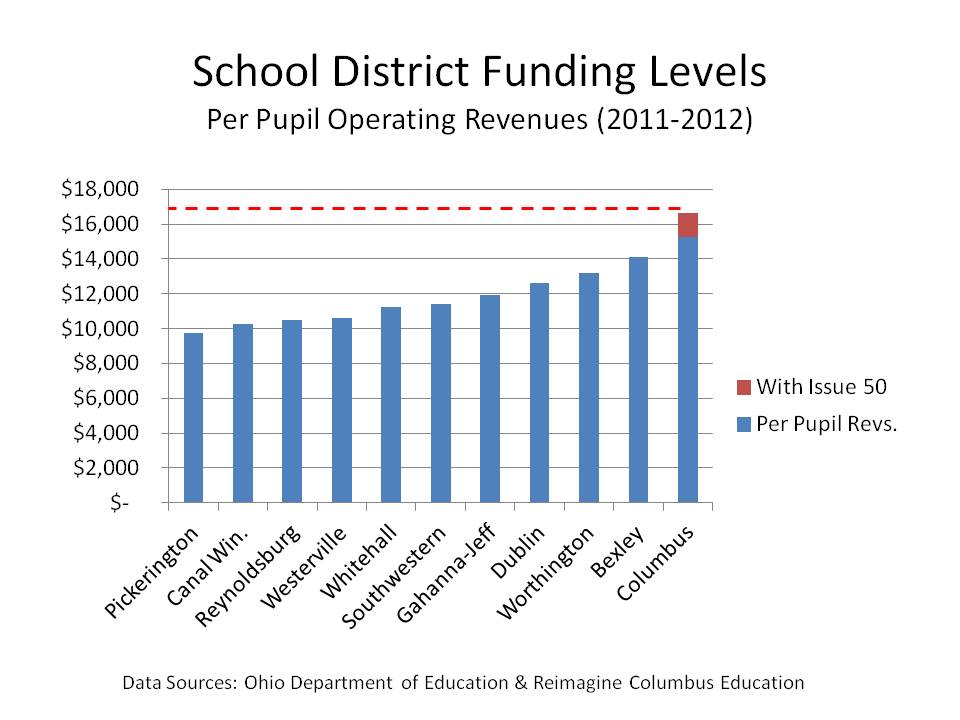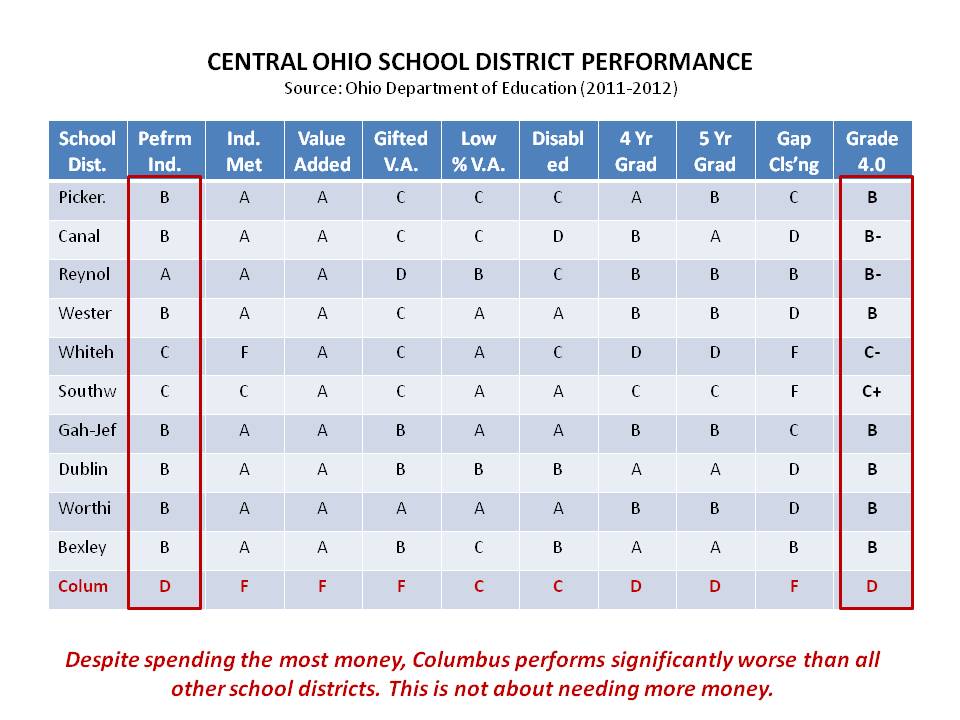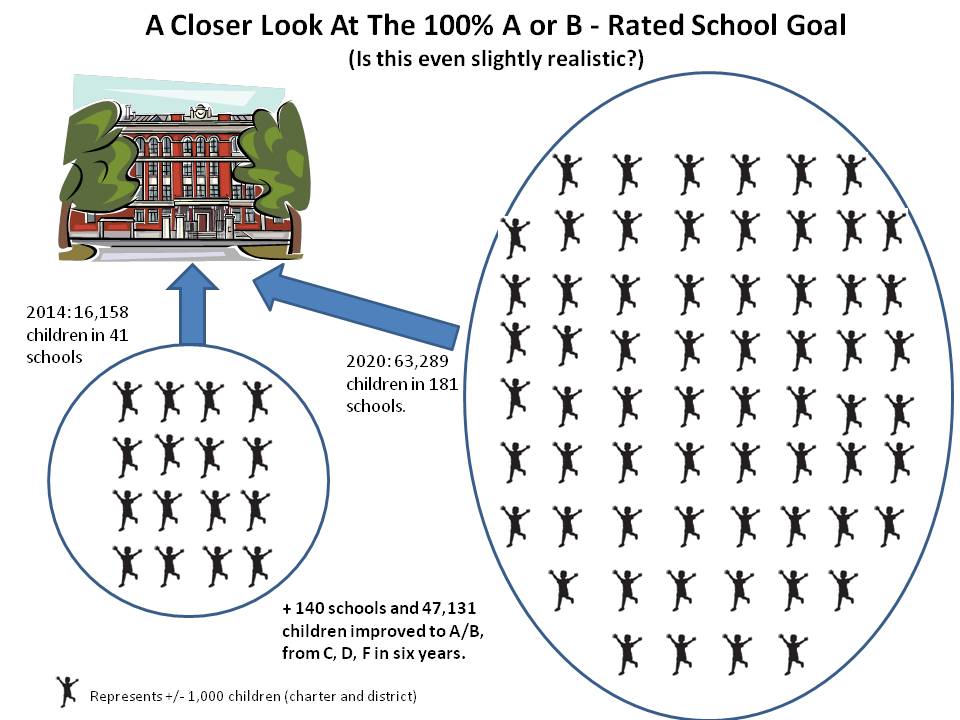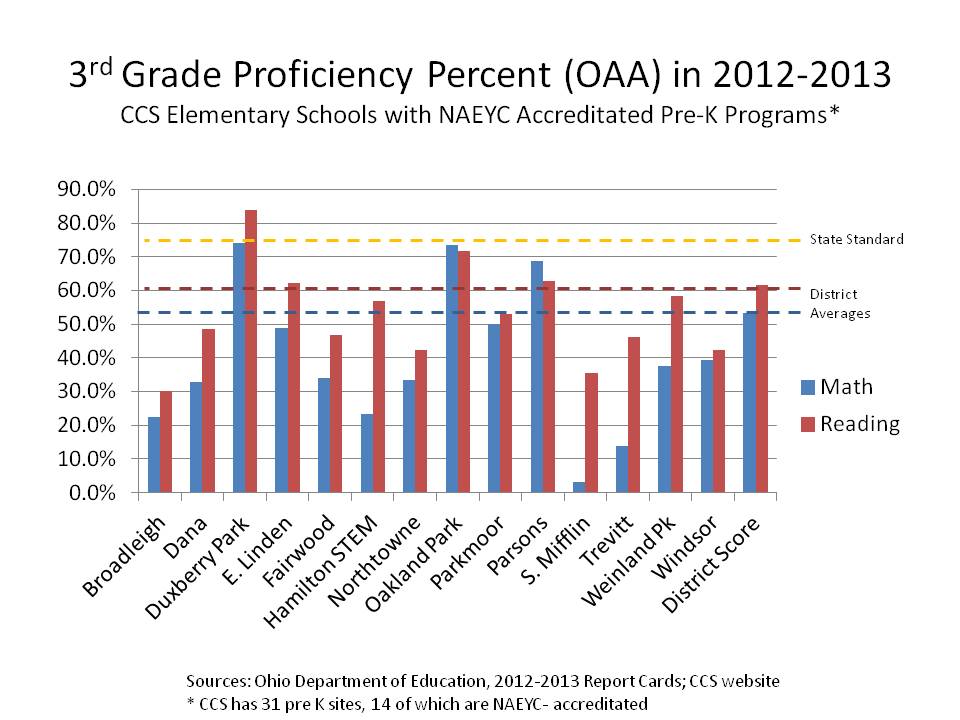Advertisement
While Mayor Coleman pushes his $1 million advertising blitz in support of his proposed 24 percent tax increase for Columbus City Schools, pesky facts keep getting in the way of all the glossy mailers, radio spots and 30-second television ads. And those facts keep suggesting that more money will not solve the problems of Columbus City Schools.
Whether you agree or disagree that the Mayor and other community leaders should be out championing for a permanent $77 million a year tax increase for a school system that is under some serious scrutiny, you have to admire the slick mailers. They manage to promote lofty goals on behalf of the Board of Education without ever mentioning the school board – which is the entity that will be receiving the money. That is how discredited this school board is – the campaign hides it behind children and celebrities and hopes you forget it is there.
Of course the million dollar levy campaign doesn’t mention the high cost of the levy. Nor does it mention Columbus City Schools and the Board of Education – an entity under tremendous focused investigation by the Auditor of State, Ohio Department of Education and U.S. Department of Justice for its data scrubbing.
To recap, the school system:
* Withdrew students who were in school so they wouldn’t have to count their low test scores
* Changed thousands of grades from failing to passing without teacher input
* Failed to timely report dropouts to affect the dropout rate
* Temporarily demoted 10th graders to 9th grade so they wouldn’t have to count their test scores
The schools have lied to the state, cheated parents and children, lied to taxpayers during past levies and continue to lie in denying past wrongdoing – and now the City’s power elite is asking voters to trust the schools with more money.
Let’s start with the money and performance. This levy campaign is asking for $515M over the next 5 years – a 24 percent increase in school property taxes. This levy funds major expansions in unproven activities. But is more money really needed, and is it correlated with educational success?
Money and Taxes
 Columbus City Schools (CCS) has a $616M annual operating budget. Its budget has grown, even as its enrollment has declined. According to the Ohio Department of Education, CCS gets more operating revenue per student than every other central Ohio school district. When you tack on the proposed levy, Columbus will receive more than $2,000 per child more than any other school district – more than $3200 than the average central Ohio school district. Tack on the levy and CCS would be receiving more than $4,600 per student more than the average central Ohio school District.
So we get a lot of money per kid – more than any other district, but we have the lowest performance of all of the districts.
Performance
Columbus City Schools (CCS) has a $616M annual operating budget. Its budget has grown, even as its enrollment has declined. According to the Ohio Department of Education, CCS gets more operating revenue per student than every other central Ohio school district. When you tack on the proposed levy, Columbus will receive more than $2,000 per child more than any other school district – more than $3200 than the average central Ohio school district. Tack on the levy and CCS would be receiving more than $4,600 per student more than the average central Ohio school District.
So we get a lot of money per kid – more than any other district, but we have the lowest performance of all of the districts.
Performance
 Comparing Central Ohio school districts, one thing is clear: Columbus, which spends more money, has the worst performance, rating out at a “D.” Looking at Whitehall and South-Western City School Districts – which might be the most economically comparable to Columbus, one sees far lower spending rates than you see in Columbus. However, when looking at student performance, both Whitehall and South-Western rate better than Columbus.
Columbus Education Plan Promises
Comparing Central Ohio school districts, one thing is clear: Columbus, which spends more money, has the worst performance, rating out at a “D.” Looking at Whitehall and South-Western City School Districts – which might be the most economically comparable to Columbus, one sees far lower spending rates than you see in Columbus. However, when looking at student performance, both Whitehall and South-Western rate better than Columbus.
Columbus Education Plan Promises
 One of the key levy promises is that “the number one school improvement goal is to enroll every child in an A or B-rated school by 2020.” Last year, just 7 percent of district schools earned an A or B. So let’s do the math on this one to see if that goal makes any bit of sense at all.
There are 63,289 Columbus kids attending schools (district and charter combined). Right now, 16,158 of them are in A or B ranked schools. To meet the stated goal, the school board and its proposed public/private partnership would have to move 47,131 (74 percent of all) children into A or B ranked schools within six years.
Let’s be real. What are they going to do – suddenly infuse these kids with knowledge they haven’t been able to infuse for the past decade, solve the life challenges these kids bring into a classroom or bring in a whole new set of kids? Unless this levy comes with its own pixie dust, one has a hard time believing that you can pass a levy and 47,000 kids magically will be learning more and accomplish that learning in better schools.
Columbus has 181 combined charter and district schools. Right now, just 41 are A or B rated. So again, the numbers are huge -- you must move 140 schools from their current status to A or B-rated status in six years. You couldn’t do it with $6 billion in spending over the last ten years – who in the world thinks that you can do it now. There is a difference between wanting something, and telling the public that it is a remote possibility. To call for 100 percent of children in A/B rated schools by 2020, requires a suspension of disbelief – in fact, it appears to simply be a dishonest pitch to voters. Unless they’ve got a whole lot of really good pixie dust.
Early Childhood Education
One of the key levy promises is that “the number one school improvement goal is to enroll every child in an A or B-rated school by 2020.” Last year, just 7 percent of district schools earned an A or B. So let’s do the math on this one to see if that goal makes any bit of sense at all.
There are 63,289 Columbus kids attending schools (district and charter combined). Right now, 16,158 of them are in A or B ranked schools. To meet the stated goal, the school board and its proposed public/private partnership would have to move 47,131 (74 percent of all) children into A or B ranked schools within six years.
Let’s be real. What are they going to do – suddenly infuse these kids with knowledge they haven’t been able to infuse for the past decade, solve the life challenges these kids bring into a classroom or bring in a whole new set of kids? Unless this levy comes with its own pixie dust, one has a hard time believing that you can pass a levy and 47,000 kids magically will be learning more and accomplish that learning in better schools.
Columbus has 181 combined charter and district schools. Right now, just 41 are A or B rated. So again, the numbers are huge -- you must move 140 schools from their current status to A or B-rated status in six years. You couldn’t do it with $6 billion in spending over the last ten years – who in the world thinks that you can do it now. There is a difference between wanting something, and telling the public that it is a remote possibility. To call for 100 percent of children in A/B rated schools by 2020, requires a suspension of disbelief – in fact, it appears to simply be a dishonest pitch to voters. Unless they’ve got a whole lot of really good pixie dust.
Early Childhood Education
 Another major levy initiative calls for the expansion of Pre-K sites to all Columbus children. Right now, CCS has 31 Pre-K sites, 14 of which have the National Association for the Education of Young Children accreditation – these are the best of the 31. Well let’s take a look at how well children at those 14 sites do in 3rd grade math and English proficiency.
The data says that despite the presence of these high quality early childhood programs, the children are falling far below the state 3rd grade proficiency standards, and indeed most sites fall below the District average 3rd grade proficiency results. Unless CCS can show that the children are better, the data seems to indicate that the availability of even high-quality Pre-K at schools does not drive 3rd grade performance, or the coming 3rd grade reading guarantee. What are the results of the existing Pre-K program? If they were good, we would be hearing about them. Instead, silence.
Another major levy initiative calls for the expansion of Pre-K sites to all Columbus children. Right now, CCS has 31 Pre-K sites, 14 of which have the National Association for the Education of Young Children accreditation – these are the best of the 31. Well let’s take a look at how well children at those 14 sites do in 3rd grade math and English proficiency.
The data says that despite the presence of these high quality early childhood programs, the children are falling far below the state 3rd grade proficiency standards, and indeed most sites fall below the District average 3rd grade proficiency results. Unless CCS can show that the children are better, the data seems to indicate that the availability of even high-quality Pre-K at schools does not drive 3rd grade performance, or the coming 3rd grade reading guarantee. What are the results of the existing Pre-K program? If they were good, we would be hearing about them. Instead, silence.
 We are now being asked to fund a massive expansion of early childhood education (Pre-K), when the data does not indicate it helps with proficiency by 3rd grade.
What the data further suggests, however, is that our kids enter Kindergarten at the same level of readiness as kids at Southwestern City Schools, but by grade 3 our kids have lost ground.
The chart shows the Kindergarten Readiness Assessment – Literacy results for Columbus kids and kids in South Western City School District, in 2008. The KRAL is the basic test that must be taken by every child entering kindergarten, as an assessment of readiness to read. (Band 1 students are suggested for broad based intervention, ; Band 2, targeted interventions; and Band 3 students benefit from enrichment strategies)
Across the Bands, CCS and South Western City Schools kids enter kindergarten with the same pre-literacy levels. However, by 3rd grade, 22 percent of SWCS kids are more proficient in math, and 16 percent are more proficient in reading than their Columbus peers.
It isn’t Pre-K that is the problem – it is what’s happening inside Columbus City Schools.
But with a million dollar advertising campaign, facts sometimes don’t matter. Glossy mailers, slick TV commercials and radio endorsements from local celebrities can hide the fact that an organization that is failing at its core job is asking for more time and money with Columbus kids. This will not be the first levy that will be passed based on marketing, but this is clearly the most expensive marketing campaign for such a shaky product.
We are now being asked to fund a massive expansion of early childhood education (Pre-K), when the data does not indicate it helps with proficiency by 3rd grade.
What the data further suggests, however, is that our kids enter Kindergarten at the same level of readiness as kids at Southwestern City Schools, but by grade 3 our kids have lost ground.
The chart shows the Kindergarten Readiness Assessment – Literacy results for Columbus kids and kids in South Western City School District, in 2008. The KRAL is the basic test that must be taken by every child entering kindergarten, as an assessment of readiness to read. (Band 1 students are suggested for broad based intervention, ; Band 2, targeted interventions; and Band 3 students benefit from enrichment strategies)
Across the Bands, CCS and South Western City Schools kids enter kindergarten with the same pre-literacy levels. However, by 3rd grade, 22 percent of SWCS kids are more proficient in math, and 16 percent are more proficient in reading than their Columbus peers.
It isn’t Pre-K that is the problem – it is what’s happening inside Columbus City Schools.
But with a million dollar advertising campaign, facts sometimes don’t matter. Glossy mailers, slick TV commercials and radio endorsements from local celebrities can hide the fact that an organization that is failing at its core job is asking for more time and money with Columbus kids. This will not be the first levy that will be passed based on marketing, but this is clearly the most expensive marketing campaign for such a shaky product.
 Comparing Central Ohio school districts, one thing is clear: Columbus, which spends more money, has the worst performance, rating out at a “D.” Looking at Whitehall and South-Western City School Districts – which might be the most economically comparable to Columbus, one sees far lower spending rates than you see in Columbus. However, when looking at student performance, both Whitehall and South-Western rate better than Columbus.
Columbus Education Plan Promises
Comparing Central Ohio school districts, one thing is clear: Columbus, which spends more money, has the worst performance, rating out at a “D.” Looking at Whitehall and South-Western City School Districts – which might be the most economically comparable to Columbus, one sees far lower spending rates than you see in Columbus. However, when looking at student performance, both Whitehall and South-Western rate better than Columbus.
Columbus Education Plan Promises
 Another major levy initiative calls for the expansion of Pre-K sites to all Columbus children. Right now, CCS has 31 Pre-K sites, 14 of which have the National Association for the Education of Young Children accreditation – these are the best of the 31. Well let’s take a look at how well children at those 14 sites do in 3rd grade math and English proficiency.
The data says that despite the presence of these high quality early childhood programs, the children are falling far below the state 3rd grade proficiency standards, and indeed most sites fall below the District average 3rd grade proficiency results. Unless CCS can show that the children are better, the data seems to indicate that the availability of even high-quality Pre-K at schools does not drive 3rd grade performance, or the coming 3rd grade reading guarantee. What are the results of the existing Pre-K program? If they were good, we would be hearing about them. Instead, silence.
Another major levy initiative calls for the expansion of Pre-K sites to all Columbus children. Right now, CCS has 31 Pre-K sites, 14 of which have the National Association for the Education of Young Children accreditation – these are the best of the 31. Well let’s take a look at how well children at those 14 sites do in 3rd grade math and English proficiency.
The data says that despite the presence of these high quality early childhood programs, the children are falling far below the state 3rd grade proficiency standards, and indeed most sites fall below the District average 3rd grade proficiency results. Unless CCS can show that the children are better, the data seems to indicate that the availability of even high-quality Pre-K at schools does not drive 3rd grade performance, or the coming 3rd grade reading guarantee. What are the results of the existing Pre-K program? If they were good, we would be hearing about them. Instead, silence.
